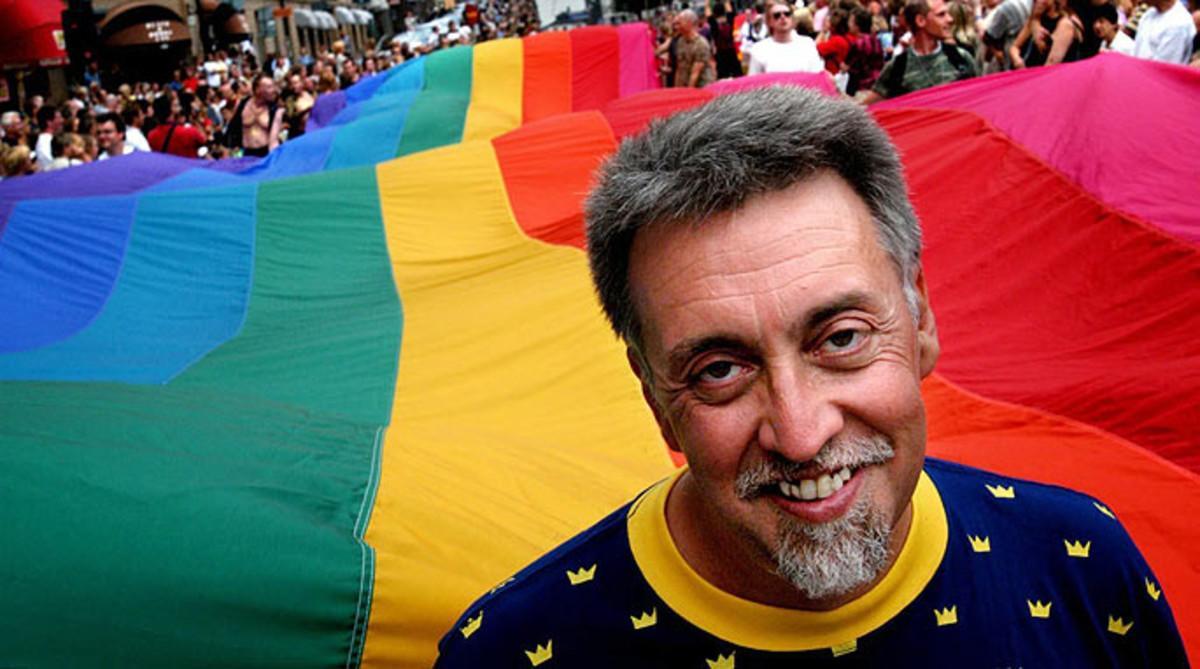You’ve seen the Pride flags everywhere, especially around June. They’re the collective symbol of the LGBTQ+ community as well as other interesting representations (which will get to later). But did you ever wonder why/how it was that particular splash of color that came to be?
Today, we’re going to look at the Rainbow Flag’s history as well as some other interesting tidbits that swirl around the circumference of its years of existence.
Riot, Pride, Flag
The month-long celebration was in honor of the Stonewall Riots in June 1969.
And, if you don’t know your human rights history, the Stonewall Inn was a bar in a gay district of New York City. Cops raided the bar and dragged dozens of gay (I’m just using the term collectivity) out on the street to arrest them for … well … being them.
But instead of just taking it, they fought back. And they fought back hard. But unlike other times, when the police were able to overpower protestors, the LGBT crowd had grown so enormous, that the cops were forced to retreat back into the Stonewall Inn. They even had to barricade themselves inside. However, that didn’t stop the crowd from prying up street meters and using them as rams.
Since then, June has been a month of open celebration. That doesn’t mean there still wasn’t push back. But the rainbow crowd was done being pushed around. They were now loud and proud.
Who Asked Who?

The credit to the Pride flag goes to Gilbert Baker, born in 1951 and raised in Parsons, Kansas. After an honorable discharge from the army, Baker taught himself to sew.
Probably during his service, he didn’t tell anyone he was a gay man and drag queen. But afterward, everyone certainly knew. So much that it reached the ears of Harvey Milk – who was the first openly gay elected official in the US.
One Big Problem
Milk wanted Baker to design a symbol not just for gay pride, but for all pride of everything under the non-straight umbrella that suffered discrimination.
The big problem at that time?
The only “gay symbol” at the time was the pink triangle.
And if that sounds scarily familiar, then you would be right. Even if the gay community tried to take back the symbol the Nazis had used during their death campaigns, it was just too seeped in horrific history to keep it in any way shape, or form.
Baker argued, “We needed something beautiful. Something from us.”
In the end, he decided to make that symbol a flag. Mostly, because he saw flags as the most powerful symbol of pride. “Our job as gay people was to come out, to be visible, to live in the truth, as I say, to get out of the lie. A flag really fit that mission, because that’s a way of proclaiming your visibility or saying, ‘This is who I am!’”

Drawing From Inspiration
Some of the details about the inspiration behind the flag came from Baker himself. Others are floating rumors that are cool either way…
- Baker was inspired by the US flag and its stacked lines, but also by the pop art of the time.
- There were also plenty of connections to the Sixties hippy movement.
- He also noted that the use of the design dated back to ancient Egypt.
Some say that the flag idea came from Judy Garland’s song “Over the Rainbow” and the fact that the actress was a gay icon (sometimes called “friends of Dorothy). But Baker debunked the rumor saying the rainbow is, “a natural flag. It comes from the sky.”
The Original Colors & Changes
Baker and a team of volunteers had made them by hand, and the first versions of the rainbow flag were flown on June 25, 1978, for the San Francisco Gay Freedom Day parade. Each stripe color had its own meaning.
- Hot pink for sex
- Red for life
- Orange for healing
- Yellow for sunlight
- Green for nature
- Turquoise for art
- Indigo for harmony
- Violet for spirit
However, hot pink was removed from the original pride flag because fabric and dye in that color were difficult to find. Turquoise was removed to make the flag appear more symmetrical when hanging vertically.
In 1979, the flag was changed again. The plan was to decorate the street lamps along the parade route with hundreds of rainbow banners, Baker decided to split the collection in two with an even number of stripes on each lamp pole.
To get this, he dropped the turquoise stripe. The result was the six-stripe version of the flag that would become the standard for future production — red, orange, yellow, green, blue, and violet.
:focal(868x796:869x797)/https://tf-cmsv2-smithsonianmag-media.s3.amazonaws.com/filer/d8/7c/d87cf0c8-f663-4619-a51e-3039f0a93458/unveiled_flag.jpeg)
Interesting Pride Flag Facts
- In 1988, a man named John Stout and the LGBT Pride Flag found national attention when he sued his West Hollywood landlords for the right to display the flag on his balcony.
- In June 2004 LGBT activists sailed to Australia’s uninhabited Coral Sea Islands Territory and raised the rainbow flag. They proclaimed it the territory independent of Australia, calling it the Gay and Lesbian Kingdom of the Coral Sea Islands in protest to the Australian government’s refusal to recognize same-sex marriages. The rainbow flag is the official flag of the kingdom.
- After having been thought lost for over four decades, a portion of one of the original 1978 eight-color rainbow flags was rediscovered. Donated in April 2021 to the GLBT Historical Society, the section is the only known surviving remnant of the two inaugural rainbow flags.
- It was not until 1994 that the rainbow flag was truly established as the symbol of LGBTQ pride. That year Baker made a mile-long version for the 25th anniversary of the Stonewall riots.
Any other Pride Flag facts you want to add? Share in the comments!


